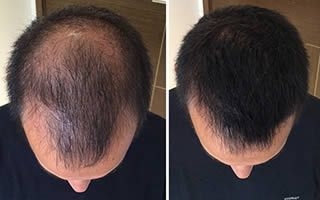Follicular Unit Transplantation
1400/02/05

Follicular Unit Transplantation (FUT) is a surgical procedure where hair is transplanted from the permanent zone.
All you need to Know about Follicular Unit Transplant
What is Follicular Unit Transplantation (FUT)?
Follicular Unit Transplantation (FUT) is a surgical procedure where hair is transplanted from the permanent zone, the area in the back and sides of the scalp where hair is more resistant to balding, to the bald or balding areas of the scalp. This is accomplished using naturally-occurring groups of 1, 2, 3, or 4 hairs, called follicular units. After the patient’s scalp is anesthetized, the doctor removes a strip of tissue from the donor area, an area within the permanent zone, and, once extracted, the donor strip is cut into many individual follicular units using microscopic dissection techniques. As these follicular unit grafts are being prepared, the doctor makes tiny holes in the scalp, called recipient sites, where the grafts are placed.
The arrangement and positioning of these follicular unit grafts determines the aesthetic qualities of a hair transplant, and so this arrangement must be decided on a case-by-case basis, depending on the patients’ history of hair loss and likelihood of future hair loss. Since follicular unit transplants mimic the way hair grows in nature, the results, in expert hands, will look completely natural and be indistinguishable from one’s original hair.

Follicular Units
For years it was thought that scalp hair grew as individual strands, but scalp hair actually grows in tiny little groups of 1-4 hairs each. These groups are called “follicular units.” Surprisingly, even after doctors learned about the existence of these groups, they didn’t think to use them in a hair transplant.
The advantages of this advanced FUT technique are fourfold:
1. Less damage to any existing hair in the recipient area.
2. Less post-operative redness.
3. Micrografts grow slightly faster than traditional types of grafts.
4. Micrografts produce no clumping or plugginess.


Hello, how can i book or consultation?
Call the clinic numbers on the site for hair transplant consultation and reservation